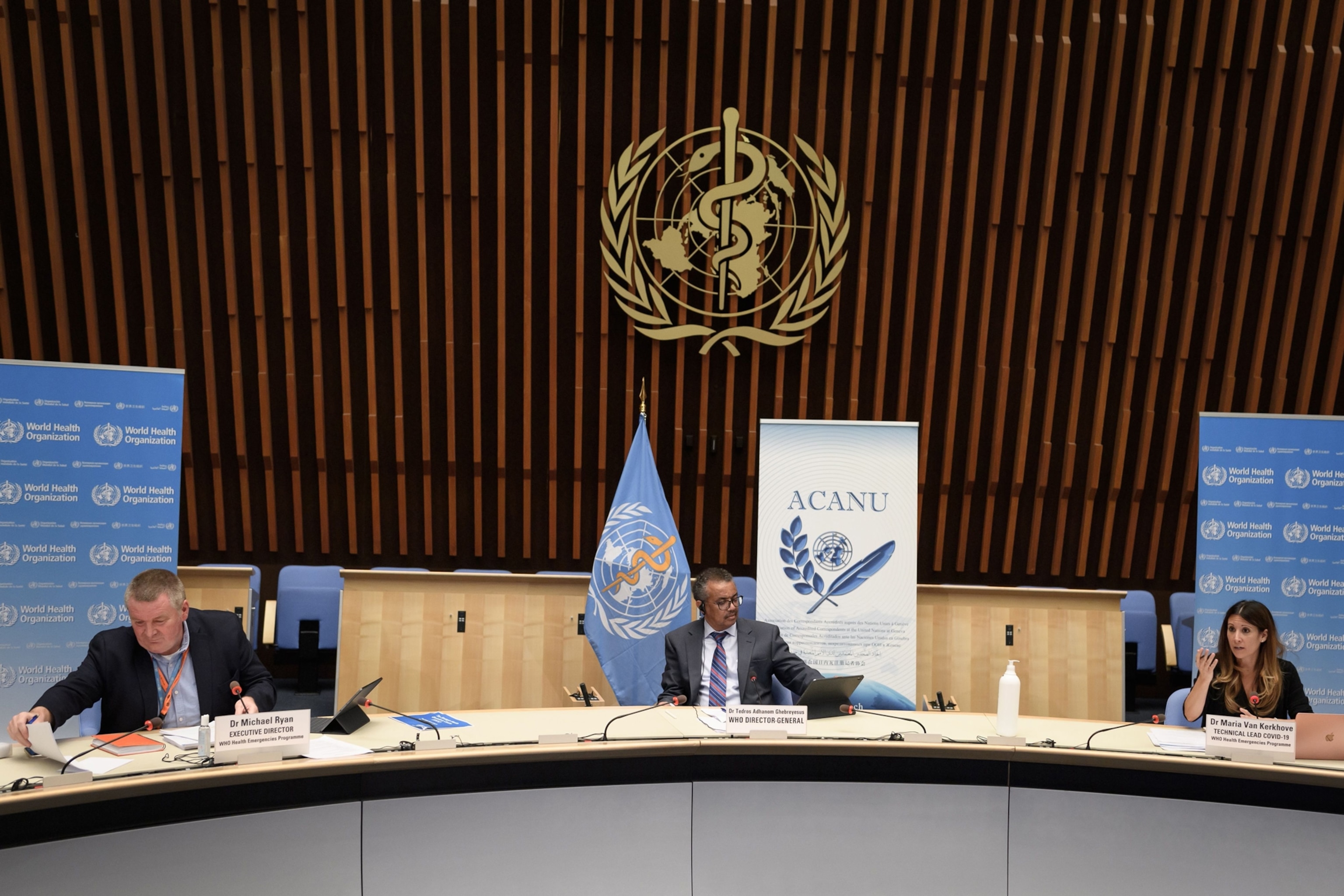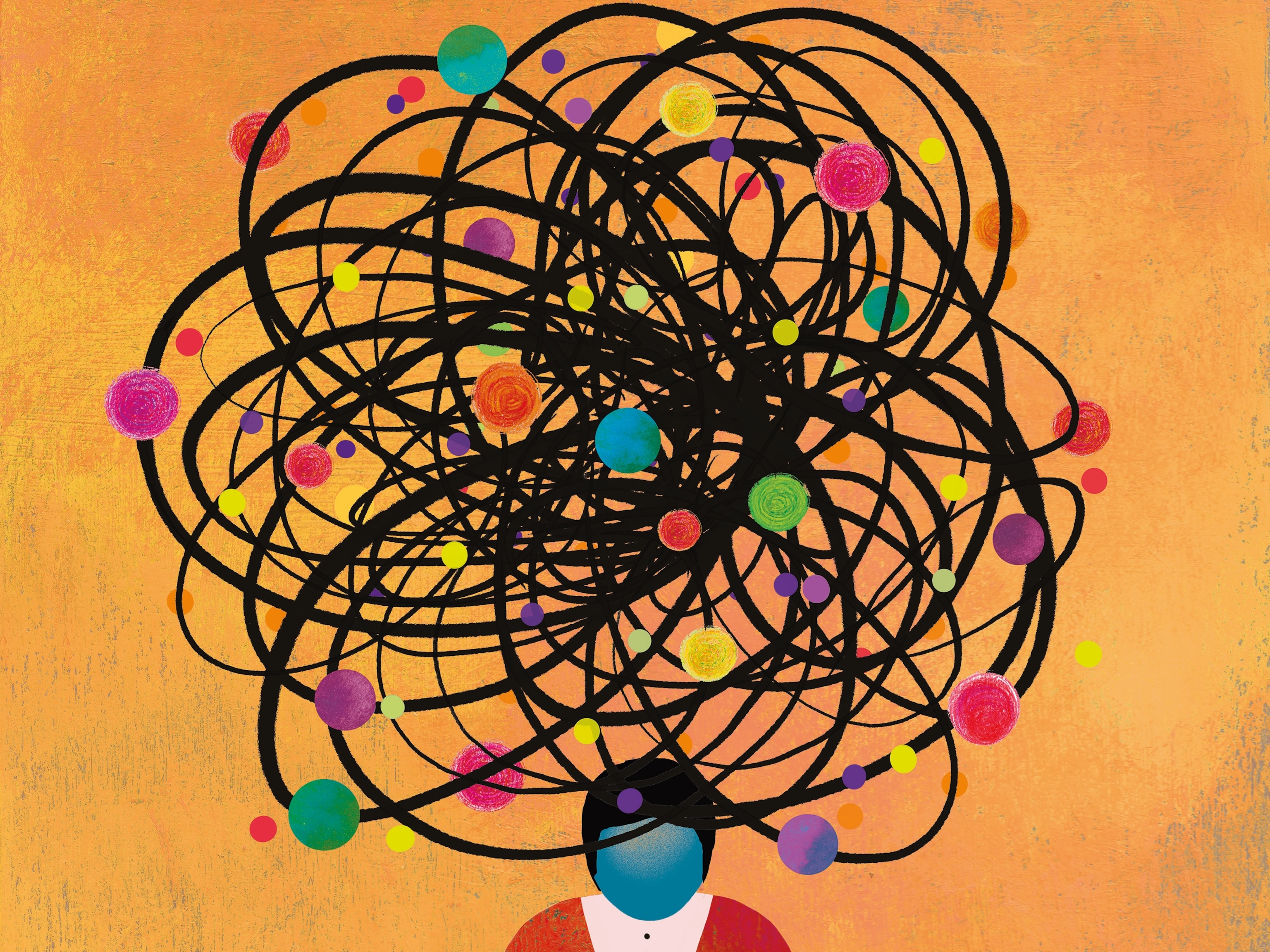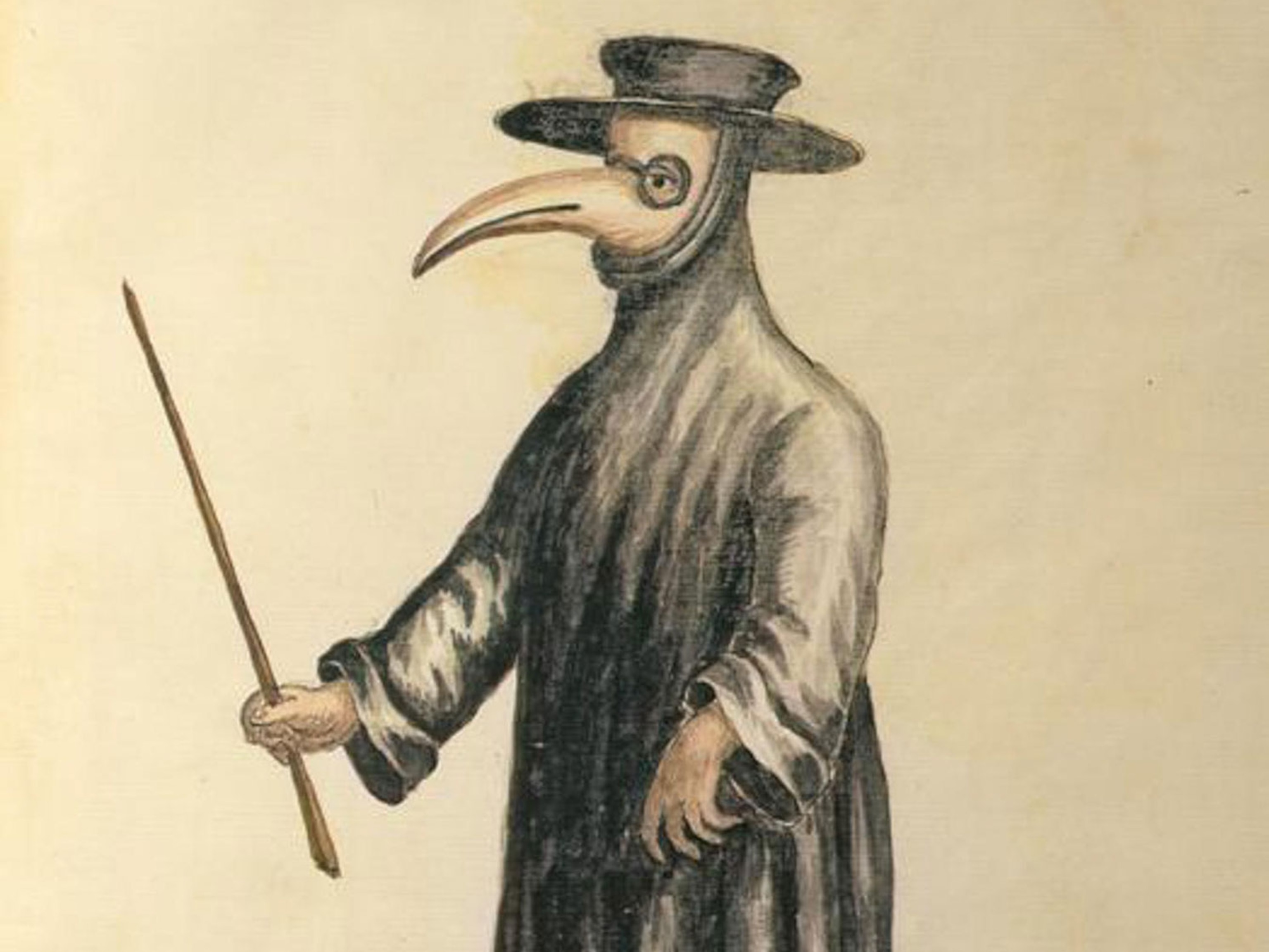
Here's what we'll lose if the U.S. cuts ties with the WHO
Find out why the international agency exists in the first place—and the ramifications a U.S. withdrawal could have for global health.
On July 7, the Trump Administration formally notified the United Nations that the United States will withdraw from the World Health Organization.
Though the move can’t take effect before July 6, 2021, the revelation that the agency may lose one of its top funders comes as the WHO guides the global response to the coronavirus pandemic, which has killed more than half a million people in only six months.
For months, President Donald Trump has chastised the WHO’s response to the pandemic, criticizing it for alleged favors to China and in some cases falsely accusing the organization of ignoring reports about the virus’s spread. In April, Trump announced that he was halting funding to the organization in order to conduct a review, and a month later he vowed to withdraw entirely.
For a global leader to cut ties with the agency is certainly “extraordinary and unusual,” says Patrick Kachur, a public health professor at Columbia University Medical Center and a member of the WHO’s Malaria Policy Advisory Committee. To help put America's withdrawal in context, here's how the WHO came to be and how it works today.
How the World Health Organization was formed
Founded in 1948, the World Health Organization is tasked with promoting health and combating disease across the globe. But nations had already been working together to resolve public health crises long before then.
In the early 1800s, cholera killed tens of thousands of people across Europe as the development of railways and steamships made it easier for people to travel, and thus for this bacteria and other infectious diseases to spread. Nations imposed quarantine measures, but by the middle of the century, their vastly differing responses began to wreak havoc on global commerce.
European nations concluded in 1851 that they needed a joint approach and convened the International Sanitary Conference to develop standardized quarantine regulations. But it took 40 years and seven meetings to ratify the first international sanitary convention, in 1892.
The next decade proved more fruitful—to an extent. “The field of international health before World War II was a pretty fractured space,” says Alexandre White, an assistant professor of sociology and the history of medicine at Johns Hopkins University School of Medicine in Maryland. While a few other public health organizations began to spring up around the world in the 1900s, they tackled different priorities, and communications among them was disjointed.
Finally, in 1945, a new era of international cooperation arrived with the founding of the United Nations at the end of World War II. Countries feared that the war’s conclusion would bring a new wave of disease—much like World War I and the 1918 influenza outbreak—and decided to combine their efforts under one international health agency within the UN. On April 7, 1948, that agency would come into force as the World Health Organization, based in Geneva, Switzerland.
What the World Health Organization does
Now the World Health Organization is composed of 194 member states that come together once a year for the World Health Assembly to decide on the organization’s priorities, leadership, and budget. This mission is then carried out by a staff of more than 7,000—including doctors, public health specialists, scientists, epidemiologists, economic experts, statisticians, and more—in the WHO’s 150 offices worldwide.
The organization’s budget operates on a two-year cycle, and in 2018-2019, its ledger was $4.4 billion, less than that of a typical major hospital system in the U.S., White says. Funding for the WHO comes from two sources: Less than 20 percent is covered by dues from member countries, while the rest is made up of voluntary contributions from member states, as well as philanthropic, intergovernmental, and private sector organizations.
The World Health Organization is charged with coordinating international responses to public health issues, providing member states with evidence-based guidelines to classify and eradicate diseases. Member nations are responsible for managing their own disease responses and reporting outbreaks, but only the WHO can declare a Public Health Emergency of International Concern (PHEIC)—the highest level of alert in global public health—which unlocks additional financial support. The COVID-19 outbreak was declared a PHEIC on January 30.
Its crowning achievement was
the eradication of smallpox.
The agency doesn’t have enforcement power. It can’t make laws or mandate. But White says its role in the international community does give the agency normative authority among member states, which typically recognize it as the world’s foremost public health agency. “The WHO has been involved in some of the most important health campaigns of the 20th century and 21st century,” he says.
Its crowning achievement was the eradication of smallpox. In 1958, the WHO launched a global initiative to combat the disease, which was killing two million people every year. For decades, as member countries undertook mass vaccination campaigns, the WHO worked to ensure the availability of the smallpox vaccine and provided technical support until the disease was finally eradicated in 1980. The agency has also been instrumental in reducing the spread of measles and tuberculosis, and it has helped nearly eliminate polio.
In other cases, the WHO’s response has faltered. The agency has been criticized for being slow to react to crises such as the HIV/AIDS pandemic in the 1980s and particularly the 2013 Ebola outbreak in West Africa, when funding lagged and its regional offices proved unequipped to handle the situation. The agency itself admitted that the Ebola crisis was a reminder that it was “ill-prepared for a large and sustained disease outbreak,” and it announced a series of reforms.
Why U.S. withdrawal is complicated
Withdrawing from the WHO is not entirely unprecedented. In 1949, shortly after the WHO’s founding, the Soviet Union led a walkout of nine members of the Eastern Bloc over concerns that the U.S. played too big a role in the organization. At the time, there was no provision in the WHO’s constitution for members to withdraw—so technically the Soviet Union never did. The WHO simply moved these countries to an “inactive” membership status until they returned in 1956, after the death of Joseph Stalin.
Taiwan was a founding member of the World Health Organization—recognized at the time as the representative of China—but its membership was supplanted when the UN recognized the mainland government People’s Republic of China as the sole representative in 1971. This set off a decades-long debate over whether Taiwan should be granted observer status within the organization—meaning it could participate in discussions but not vote on any decisions— which was restored in 2009 before China mounted a successful petition for its removal in 2016.
In 1948, a U.S. joint congressional resolution specified that the country must give one year’s notice and fulfill its current financial obligations in order to leave the WHO.
For the U.S., too, the withdrawal process is complicated. In 1948, a U.S. joint congressional resolution specified that the country must give one year’s notice and fulfill its current financial obligations in order to leave the WHO. Only another joint congressional resolution could trigger the withdrawal from a multilateral treaty, according to a Foreign Affairs article by Harold Hongju Koh, a former assistant secretary of state, and Lawrence O. Gostin, director of the World Health Organization Collaborating Center on National and Global Health Law. They note that the Supreme Court has judged in the past that presidents do not have unilateral constitutional authority to withdraw from such treaties.
The upcoming U.S. presidential election may also render the point moot. While Trump has given the one-year notice for departure, the November elections could catapult a new president to office by that time—and presumptive Democratic nominee Joe Biden has pledged his support for the WHO.
But even just threatening to leave the WHO casts a chilling effect on the public health community, Kachur says. “Maybe we’ll have a change in leadership in our country and this will never come to pass, but [with] the damage that the announcement causes … it is going to be difficult for the U.S. to engage in the same level of respect and trust with its international collaborators.”
What are the ramifications if it does?
If the U.S. does ultimately leave, observers worry about what that will mean—for the nation, the WHO, and global health. In 2018-2019, the United States was the top contributor to the WHO, with $893 million. Its contributions account for about 15 percent of the WHO’s biennial budget.
This funding shortfall would gut the WHO’s ability to respond to global emergencies—such as the current one—by reducing the resources for providing vaccines and tracing outbreaks. A reduced budget could jeopardize endeavors like the Solidarity Trial, an international research endeavor the WHO launched to find treatments for COVID-19, as well as the agency's work to equip its members with vital medical supplies. It would also devastate the many public health campaigns the WHO operates, from combating tuberculosis to promoting children’s health.
Kachur notes too that most of the money the U.S. gives to the WHO comes from voluntary contributions, which donors can earmark to specific programs. The Centers for Disease Control and Prevention, where Kachur spent most of his career, makes sizable voluntary contributions to the WHO on behalf of the U.S. government for efforts including polio eradication, influenza surveillance, and vaccine development—contributions that would cease unless Congress steps in to protect them. "The United States has controlled a lot of what the WHO prioritizes through its [voluntary] contributions," Kuchar says. "And so by pulling out of WHO, the programs that are affected the most are those that matter the most to the U.S."
Withdrawal would also mean cutting off access to the WHO’s global system for sharing data and vaccine research during a pandemic—while making the world more vulnerable to future pandemics. “We’d lose a very important link to our understanding of where health threats are emerging,” Kachur says. He points out that the WHO could no longer rely on the expertise of U.S. scientists who currently advise the organization—and the U.S. would also forfeit some of its ability to influence scientific standards and practices across the globe.
Ultimately, the international community would lose exactly what it sought to gain by collaborating in the first place: the ability to set standards about the best way to move forward in public health crises. “That’s especially important at a time like the current pandemic, where there’s a lot of information emerging rapidly,” Kachur says. “It takes time, experience, and communication across countries to assemble that information and make reliable sense out of it quickly.”








